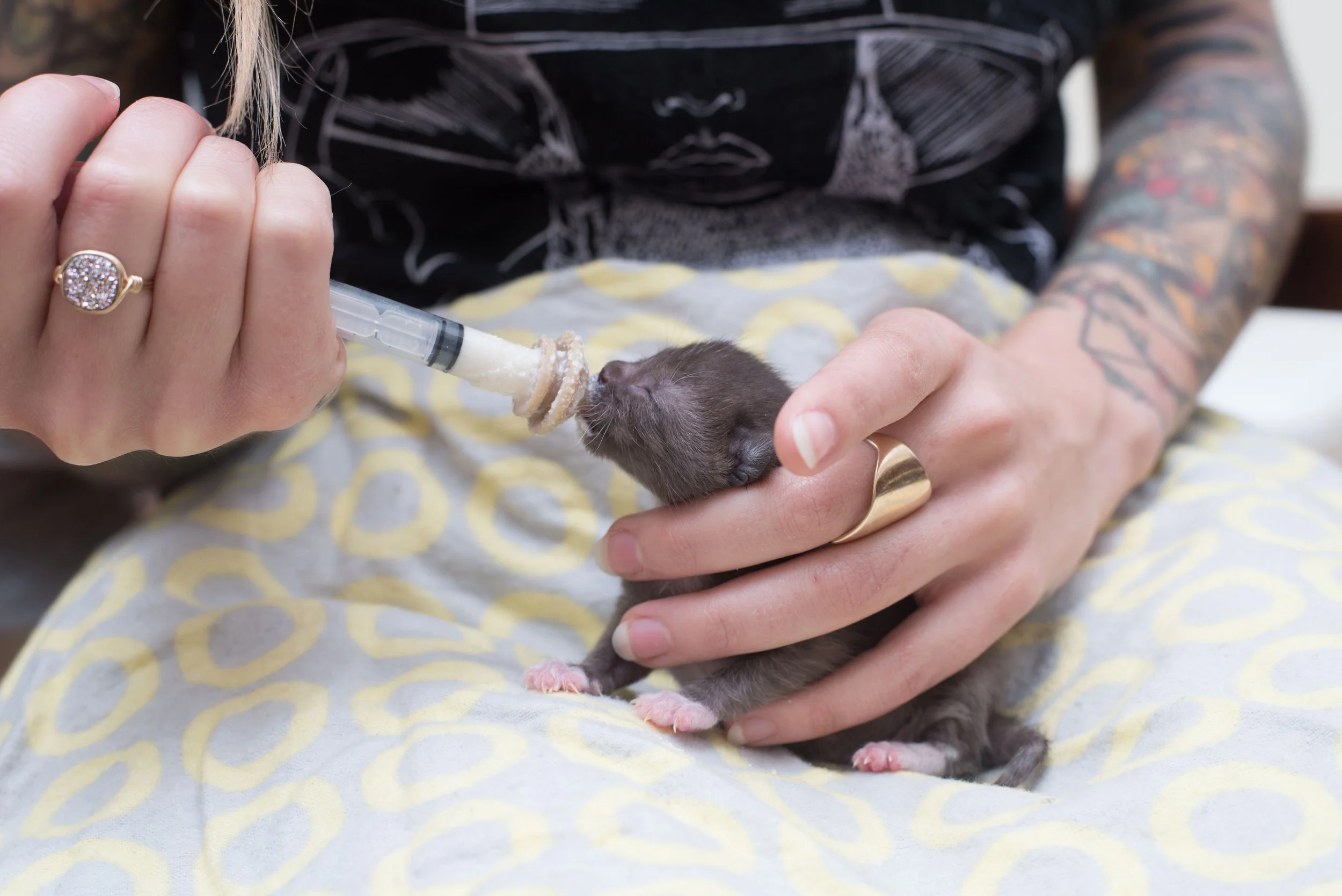Urine and Fecal Scalding in Young Kittens
When caring for a neonatal kitten, keeping their bottom clean is an essential part of their care. Kittens who are being stimulated to go to the bathroom or who are new to litter box training are prone to irritation and even scalding due to urine and fecal residue that can linger behind on the skin after potty time. Let’s talk about what scalding is, how to avoid it, and what to do when it occurs.
Urine and Feces Can Scald Skin
Urine and fecal scalding is a form of moist dermatitis, a skin condition characterized by irritation, inflammation, redness, burning, fur loss, and sometimes infection. Affected areas typically include the butt, genitals, tail, tummy, legs, and feet. Kittens with scalding will be very uncomfortable, and may be prone to necrotizing tissue or infections that can be deadly for a small feline. For this reason, the condition should be taken seriously and treated with haste.
After a kitten pees, it may look like she’s all dry, but urine residue can be left behind. Due to the acidity of urine, a kitten’s sensitive skin can develop a painful rash, similar to when a baby gets diaper rash. Liquid stool can also cause irritation and infection if left for prolonged periods of time. Scalding is especially common in kittens 0-5 weeks old due to several risk factors, including the likelihood that they may have diarrhea or parasites, that they may go potty on themselves either while resting or while being stimulated by a caregiver, that they are not yet effective at grooming themselves, or that they may not yet be litter trained.
A kitten with urine scald of the tummy and legs
A kitten with dry skin caused by urine scald
A kitten with urine scald of the tail
To Avoid Scalding, Keep the Bum Clean and Dray
Mom cats will meticulously lick their young to keep them clean, so when caring for orphaned kittens, caregivers should be mindful of frequent cleaning, too. To avoid scalding, I recommend always using a wet baby wipe after stimulating kittens, or anytime a young kitten seems to be struggling to keep their bottom clean. Gently wiping down the butt, genitals, and tummy with a wet wipe will typically be enough to keep the kitten clean. After wiping them down, be sure to aerate the area until dry, and ensure that they’re not falling asleep on a moist bum.
Find kitten-safe wet wipes here.
There’s No Shame in a Butt Bath
If a kitten’s back end is really soiled, a butt bath is in order. Never let a kitten sit in her own filth! Crusty butts can be gently soaked in warm water, then washed with a fragrance-free baby shampoo and rinsed. The butt bath process should last under 2 minutes and the kitten should be immediately dried and placed onto a heating pad afterwards in order to ensure that her body temperature remains stable and comfortable.
Watch my instructional butt bath video!
If Scalding Occurs
If scalding does occur, you’ll notice the skin is red, irritated, dry, flaking, or even breaking. It’s important to keep the area clean without causing even more irritation. Take these steps if you think your kitten has urine or fecal scald:
Keep the affected area clean with a gentle soak or even a gentle compress with a clean, wet, warm washcloth to remove any residue.
Gently pat the area completely dry.
Apply a light layer of a zinc-free ointment to the skin. Caution: never use baby ointments without checking the ingredients first! Many ointments contain zinc-oxide, which can be toxic to the kitten if ingested.
Repeat as necessary.
If the skin appears to be cracking, broken, inflamed, or severely irritated, be mindful of bacterial infections that can occur. Talk with your veterinarian about whether or not an antibiotic is appropriate. In extreme cases, debridement may be necessary to remove necrotic tissue and help the wound heal.







